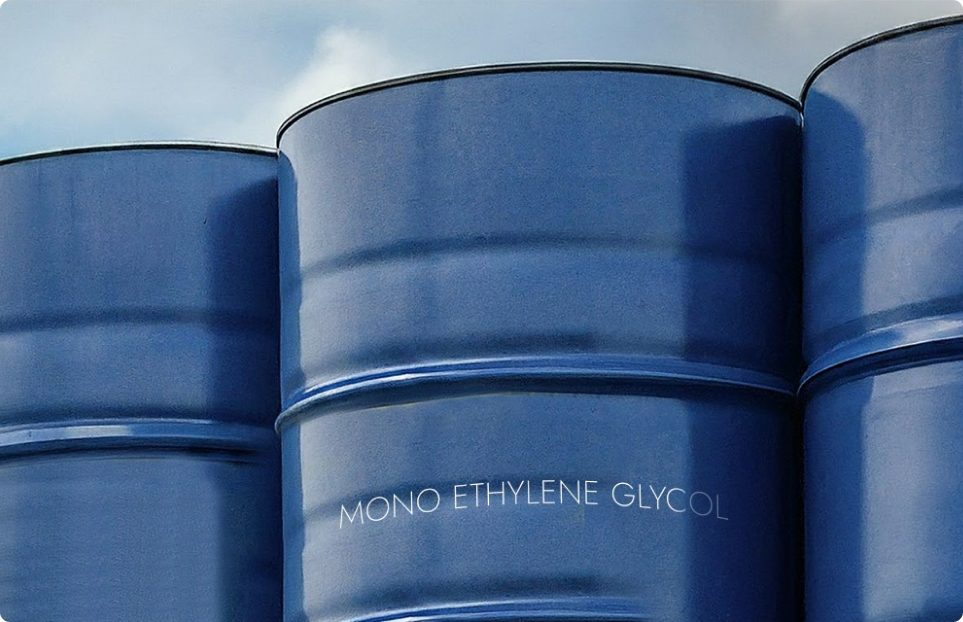
Monoethylene Glycol (MEG) is a crucial industrial chemical with a versatile range of applications, from polyester production to antifreeze formulations. As we look ahead, the future of MEG appears promising, driven by evolving market dynamics and emerging applications that promise to expand its utility across diverse industries.
MEG is primarily used as a raw material in the production of polyester fibers and resins, accounting for a significant portion of its global consumption. According to industry reports, the demand for polyester is expected to grow steadily due to its extensive use in textiles, packaging, and automotive sectors. This growth directly influences the demand for MEG, as it serves as a key component in polyester production.
Recent market analyses indicate a robust expansion in MEG consumption, driven by increasing urbanization, rising disposable incomes, and shifting consumer preferences towards sustainable and durable materials. Emerging economies, particularly in Asia-Pacific and Latin America, are expected to witness substantial growth in MEG demand, supported by expanding industrial infrastructures and rising manufacturing activities.
1. Antifreeze and Coolant: This is perhaps the most well-known application of MEG. When mixed with water, MEG lowers the freezing point and raises the boiling point of the solution. This makes it ideal for use in car radiators and other cooling systems, preventing freezing in winter and overheating in summer.
2. Heat Transfer Fluid: MEG’s ability to withstand a wide range of temperatures and its excellent heat transfer properties make it a valuable industrial coolant. It’s used in various applications, including HVAC systems, chemical processing plants, and food and beverage production facilities.
3. Chemical Intermediate: A significant portion of MEG goes towards the production of other chemicals. It’s a key building block for polyester fibers (PET) used in clothing, textiles, and plastic bottles. Additionally, MEG serves as a starting material for various resins, antifreeze additives, and hydraulic fluids.
4. Deicing Fluids: MEG is often a component of deicing fluids used to melt ice and snow on roads, airport runways, and walkways. While chloride-based deicers are more common, MEG offers an environmentally friendlier alternative, particularly when dealing with sensitive ecosystems.
5. Other Traditional Applications: Beyond the major categories, MEG finds use in various other areas.
These include:
Electrolytic Capacitors: MEG acts as an electrolyte in some types of capacitors.
Textile Processing: MEG helps improve the dyeing and finishing processes of textiles.
Paper Production: Adding MEG to paper pulp improves its flexibility and moisture resistance.
Leather Treatment: MEG can be used as a humectant in leather treatment, keeping it soft and supple.
Beyond its traditional uses, MEG is finding new applications and markets, driven by technological advancements and evolving consumer demands for sustainable solutions. Here are some promising areas where MEG is poised to make a significant impact:
1. Sustainable Packaging Solutions
In response to growing environmental concerns, there is a rising demand for sustainable packaging materials. MEG plays a crucial role in the production of polyethylene terephthalate (PET), which is widely used in beverage bottles, food containers, and packaging films. The shift towards recyclable and bio-based PET materials presents opportunities for MEG to enhance its footprint in the packaging industry.
2. Energy Efficiency and Infrastructure Development
MEG’s properties as an effective antifreeze and coolant make it indispensable in various industrial applications, including HVAC systems, refrigeration units, and automotive engines. As industries focus on improving energy efficiency and reducing carbon footprints, MEG’s role in enhancing thermal management and preventing corrosion in infrastructure will likely expand.
3. Emerging Technologies and Chemical Innovations
Advancements in chemical engineering have enabled the development of bio-based MEG, derived from renewable feedstocks such as biomass and waste materials. Bio-based MEG not only offers environmental benefits by reducing reliance on fossil fuels but also opens new avenues for sustainable manufacturing practices across industries.
4. Healthcare and Pharmaceutical Applications
MEG’s properties as a solvent and preservative make it suitable for various pharmaceutical formulations and healthcare products. The pharmaceutical industry’s stringent quality standards and increasing demand for safe and stable ingredients position MEG as a valuable component in drug delivery systems and medical devices.
5. Electric Vehicles Application
The use of MEG in lithium-ion batteries for electric vehicles and bio-based solvents presents exciting new market opportunities.
Looking forward, the future of MEG hinges on advancements in technology, regulatory frameworks promoting sustainability, and evolving consumer preferences towards eco-friendly products. Industries are increasingly adopting MEG not only for its functional properties but also for its role in achieving sustainability goals and reducing environmental impact.There’s a growing emphasis on developing cleaner production methods for MEG, potentially using biomass conversion or electrocatalytic oxidation.
In conclusion, Monoethylene Glycol (MEG) is set to play a pivotal role in shaping future industrial landscapes, driven by expanding applications and sustainable innovations. As markets evolve and demand grows, MEG’s versatility as a raw material and functional chemical will continue to drive its adoption across sectors ranging from packaging and automotive to healthcare and renewable energy. By embracing technological advancements and sustainable practices, MEG promises to contribute significantly to a more resilient and eco-conscious global economy.
Explore the potential of MEG in your industry and discover how this versatile chemical can enhance product performance, sustainability, and market competitiveness in the years to come. Stay informed, innovate responsibly, and seize the opportunities that Monoethylene Glycol presents for a sustainable future.